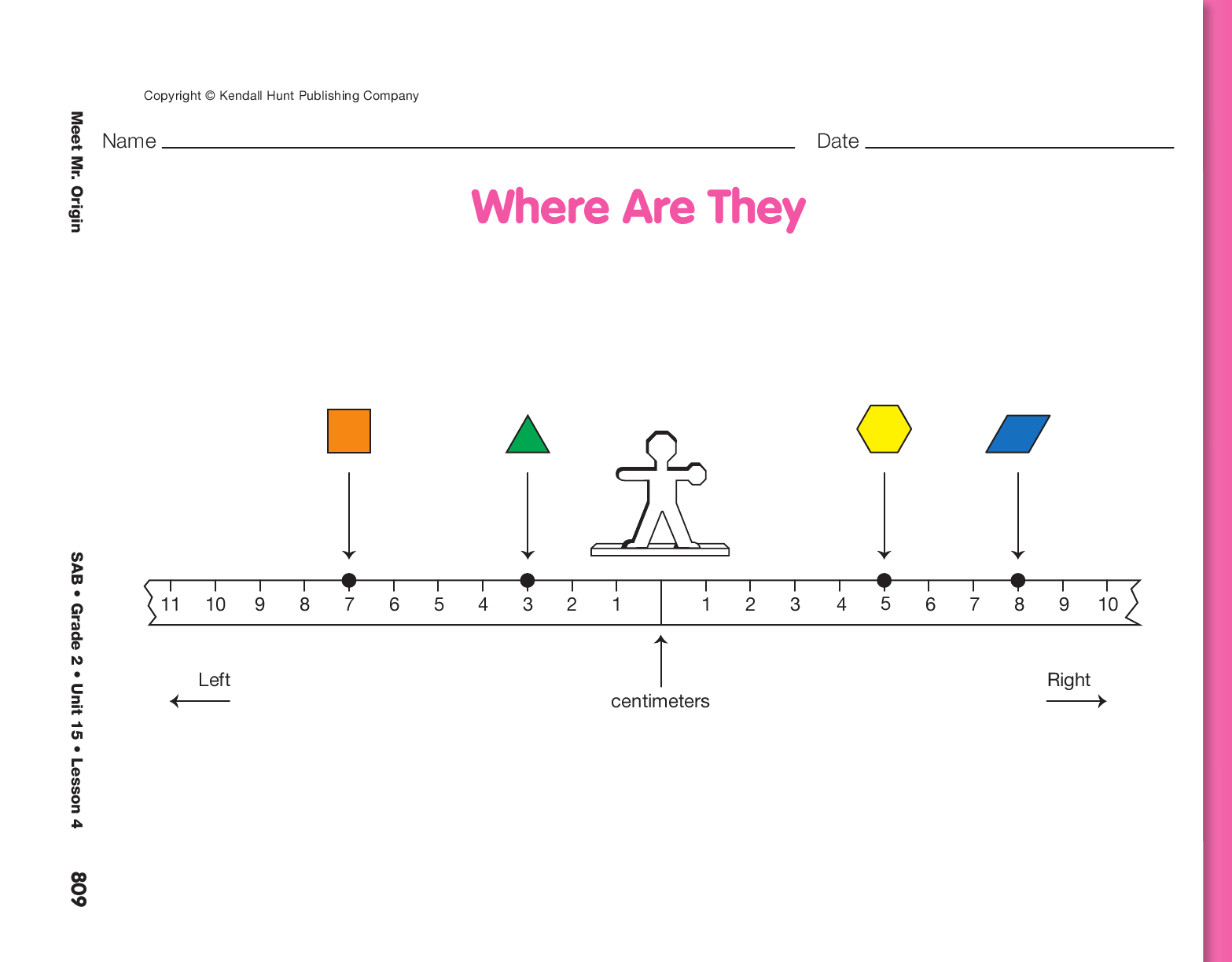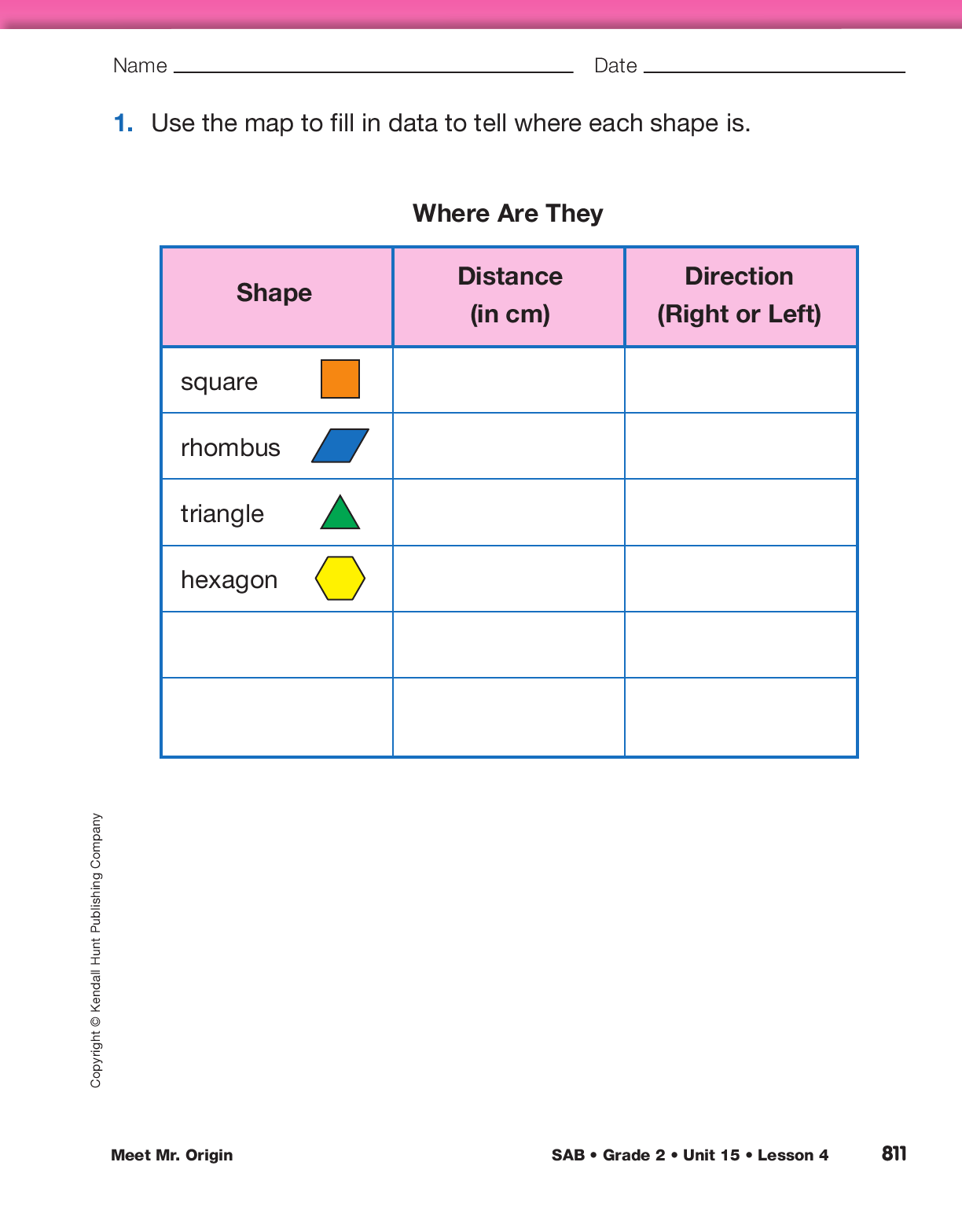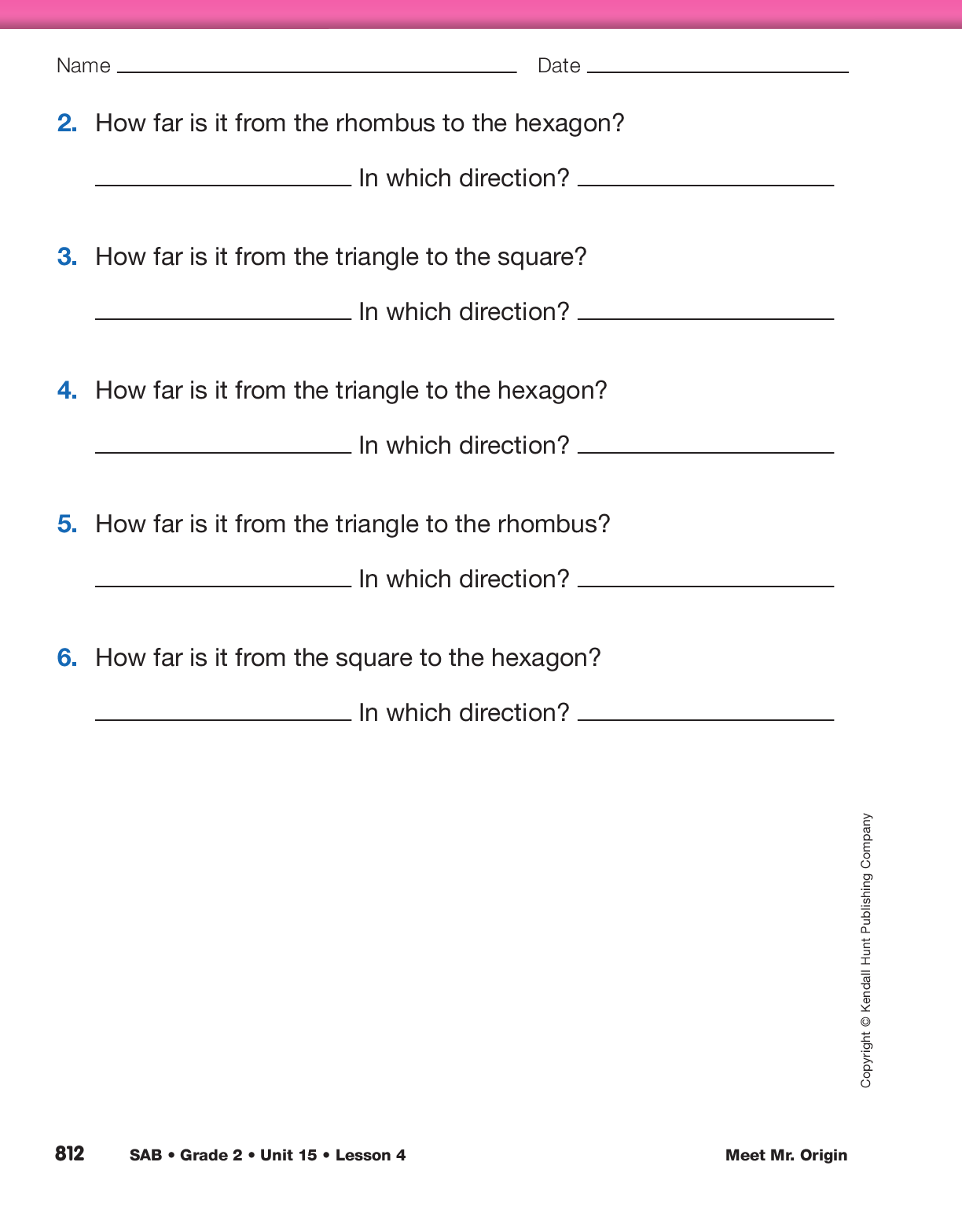Display and direct students to the Mr. Origin’s Map page in the Student Activity Book. Pose the following
problems and have students solve them by measuring and counting centimeters.
- How far is it from the triangle to the square?
(3 centimeters) How did you decide? (Possible
response: I started on the triangle and counted the number of centimeters to get to the square.)
- In which direction? (left)
- How far is it from the hexagon to the rhombus?
(4 centimeters)
- In which direction? (right)
Students may have difficulty at first with the last
question because both the hexagon and the rhombus
are on the left of the origin. Be careful to frame your
questions so that directionality is clear; that is, you
are starting at one object and moving along the axis
toward the other object. The questions as stated are
different from a question such as “How much distance
is there between the hexagon and the rhombus?”
In the latter question, there is no directionality.
Pose a few additional problems in which the
two objects are on different sides of the origin
(zero). Have students show their solutions on the
display.
- How far is it from the rhombus to the square?
(10 centimeters)
- How do you know? (Possible response: I had to
move 6 centimeters on the left side to get to zero
and then keep counting 4 more centimeters on
the right side of 0: 6 cm + 4 cm = 10 cm.)
- In which direction? (right)
- How far is it from the triangle to the hexagon?
(17 centimeters)
- How do you know? (Possible response: First I
moved
7 centimeters from the triangle to get to
zero, and then I moved 10 more centimeters to
get to the hexagon.)
- In which direction did you move? (left)
Ask students to complete the Where Are They pages in the Student Activity Book independently.
Use the Where Are They pages in the Student Activity Book
to assess students’ abilities to describe the location of an
object relative to an origin using direction and distance [E3];
measure length using centimeters [E4]; and make a table to
find information about a data set [E5].
To provide targeted practice, students can take turns
role-playing Mr. Origin. Students can wear a mitten or you
can make mittens by stapling the sides of two round paper
plates together. Leave enough room so that students can slip
the stapled plates on their right hands. Each student can give
a direction for the game “Mr. Origin Says” and model the
movement as their classmates maneuver their figures of
Mr. Origin accordingly.
















